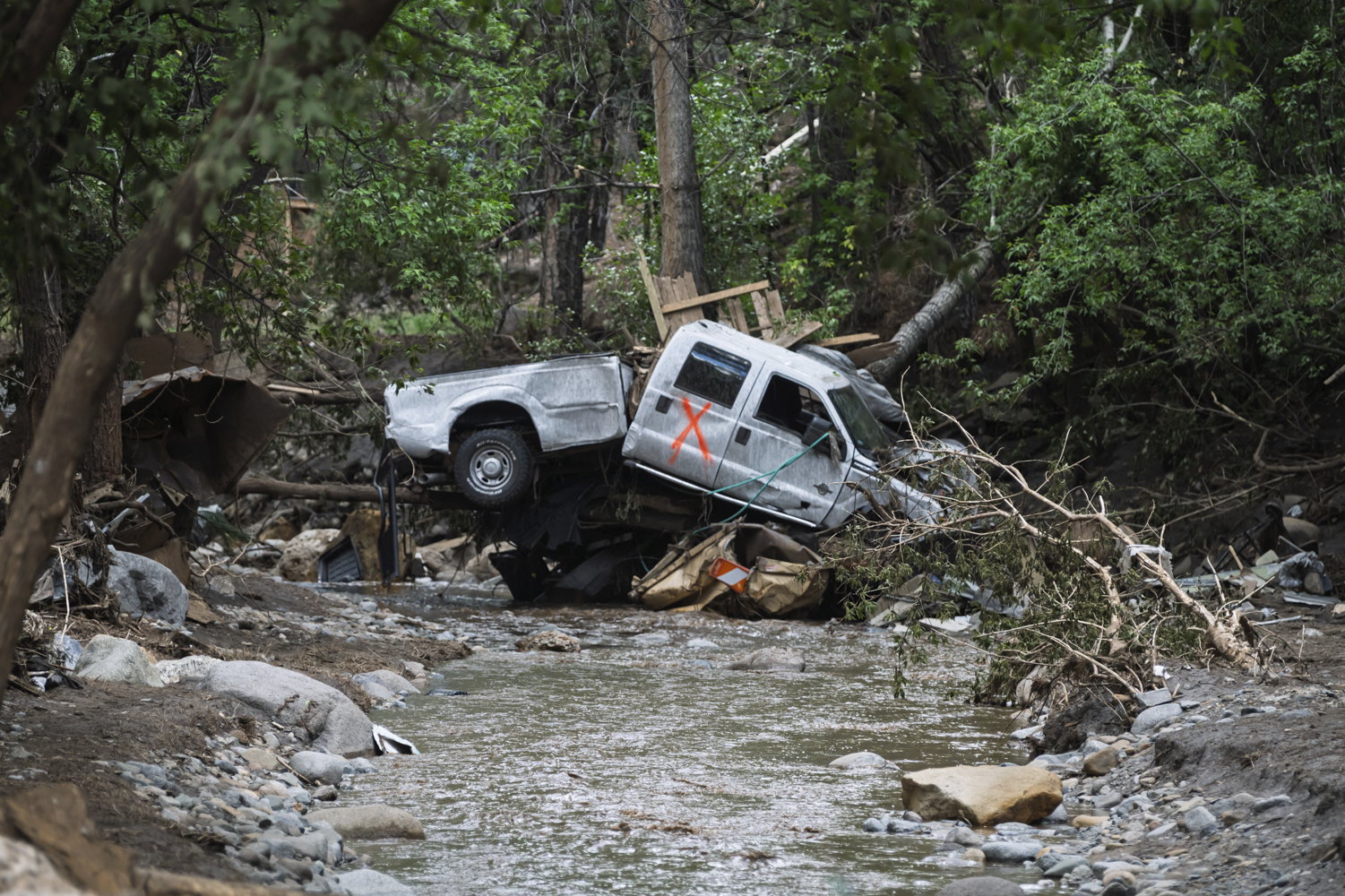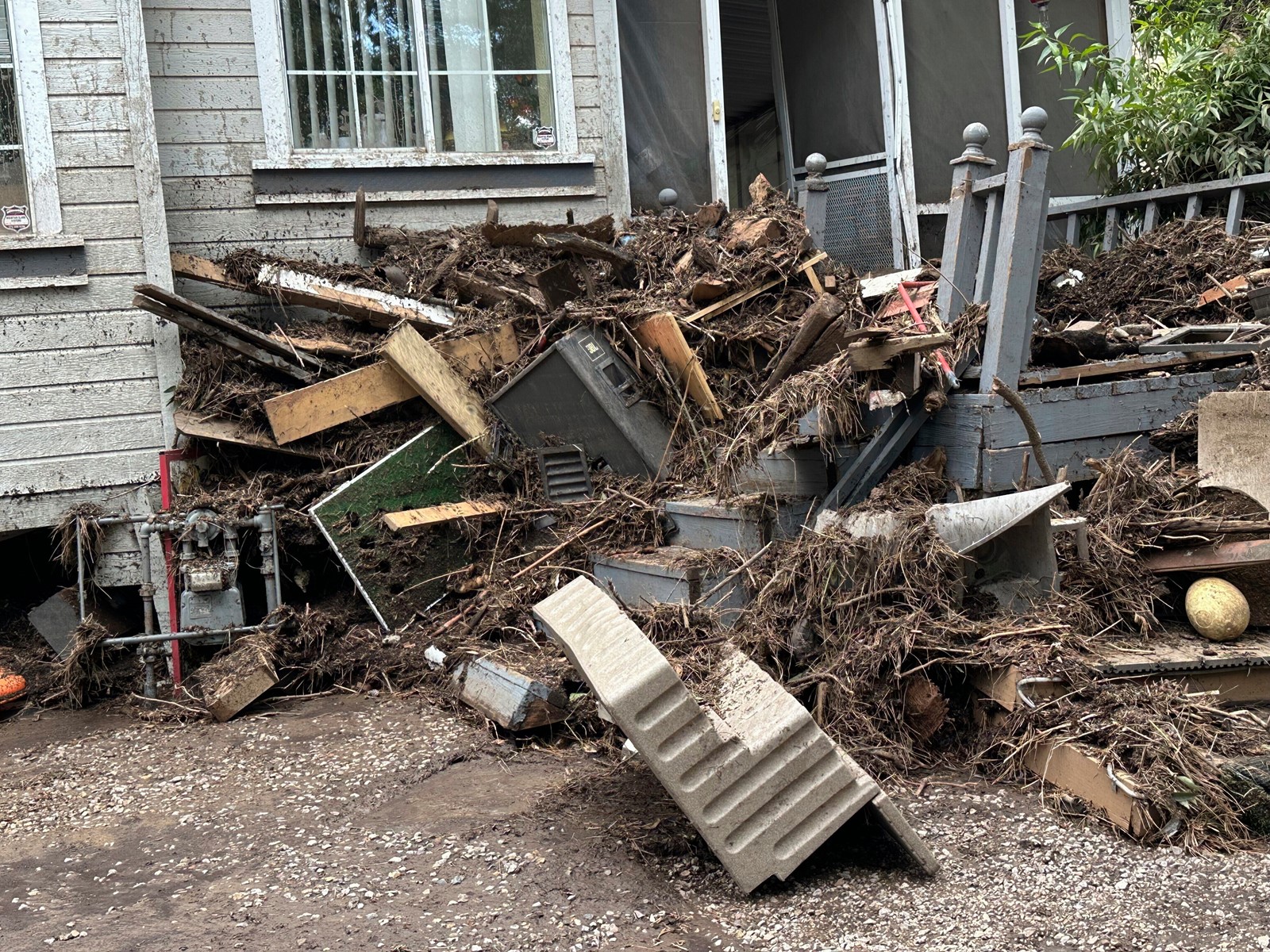

RUIDOSO, N.M. >> The loss of three lives to flash flooding in the mountain village of Ruidoso is “unfathomable and unfair,” New Mexico’s governor said Thursday, as surveys revealed more extensive damage to homes than initially thought.
Gov. Michelle Lujan Grisham spoke from Ruidoso alongside local emergency management officials who said at least 200 homes were damaged in Tuesday’s flooding — at least four times the initial estimate — including one home swept away entirely.
An intense bout of monsoon rains set the disaster in motion Tuesday afternoon. Water rushed from the surrounding mountainside, overwhelming the Rio Ruidoso and taking with it a man and two children who had been camping at a riverside RV park. Their bodies were found downstream. One person is still unaccounted for.
Lujan Grisham expressed condolences on behalf of the whole state and wished a speedy recovery for the parents of the 4-year-old girl and 7-year-old boy who were killed. She said it will be an emotional journey.
“There are no words that can take away that devastation,” she said. “We are truly heartsick.”
The children’s parents were being treated for injuries at a hospital in Texas, according to officials at Fort Bliss, where the father is stationed.
Congresswoman Melanie Stansbury, whose district includes Ruidoso and surrounding Lincoln County, told reporters that more rain is coming and that residents remain at risk. She urged people to follow emergency orders, saying “we cannot lose another life.”
Broken tree limbs, twisted metal, crumpled cars and muddy debris remain as crews work to clear roads and culverts wrecked by the flooding.
Tracy Haragan, a lifelong Ruidoso resident on the verge of retirement, watched from his home as a surging river carried away the contents of nine nearby residences.
“You watched everything they owned, everything they had — everything went down,” he said.
A popular summer retreat, Ruidoso is no stranger to disaster. It has spent a year rebuilding following destructive wildfires last summer and the flooding that followed.
“It is such a great town, it just takes a tail-whipping every once in a while,” Haragan said. “We always survive.”
Mayor Lynn Crawford said hearts are broken over the lives lost and stomachs are in knots as residents begin to take stock of the damage.
Officials were lobbying for a presidential disaster declaration, and Crawford said he expects no hurdles to additional federal assistance.
The river runs thick with sediment that can settle and raise future water levels. Stansbury said already-promised federal funding to remove silt from the riverbed would help mitigate future flooding, but that the community would need continued help for the next decade after suffering successive catastrophes.
Lujan Grisham said the federal government likely will advance $15 million — from the Department of Agriculture and the Federal Emergency Management Agency — to jumpstart recovery efforts. That amount could climb to more than $100 million in the coming months as Ruidoso tries to rebuild and mitigate future floods.
The floodwaters of the Rio Ruidoso rose more than 20 feet Tuesday to set a record high-water mark, said National Weather Service meteorologist Todd Shoemake in Albuquerque. That eclipsed the previously recorded high in July 2024 by nearly 5 feet.
About 3.5 inches of rain fell over the South Fork burn scar in just an hour and a half, Crawford said. As little as a quarter of an inch of rain over a burn scar can cause flooding.
“They were probably already getting some runoff from upstream before it even actually started raining on top of the wildfire burn scar,” Shoemake said. “It really was just kind of a terrible coincidence of events that led to that.”
He likened the intense rainfall to a 100-year storm, which has a 1% chance of happening in any given year.
Gov. Grisham has requested a presidential disaster declaration, tallying more than $50 million in emergency response expenditures, including water rescues, and infrastructure damage.
She said officials need to rethink how funding is doled out to reduce the risks of future flooding, in efforts that might restore watersheds and forests.


 PREVIOUS ARTICLE
PREVIOUS ARTICLE
